Going to Venice, Italy, is a dream vacation for millions of people every year. Many travelers return again and again for the romantic city’s beauty and charm. Venice is revered for its art and architecture. Here are some of the top things to see in Venice.
The absence of motor vehicles makes this place unique. People get around by walking along the narrow streets, or riding on the network of canals. The waterways pass under lovely bridges and lead to stately old buildings such as palaces, churches, museums, and theaters.
If you’re planning on an upcoming venture to the Mediterranean, below are the top things to see in Venice, Italy.
Piazza San Marco (Saint Mark’s Square)
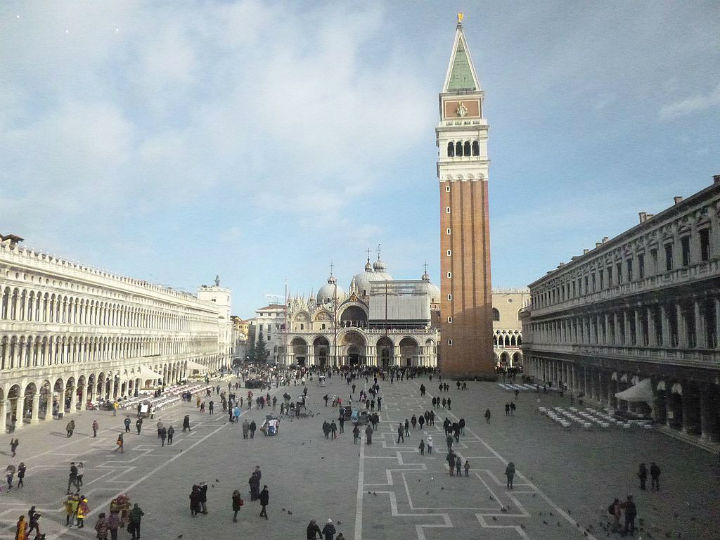
The community center is Piazza San Marco, or Saint Mark’s Square. It is surrounded by buildings erected in the 1500s that house shops and restaurants. Tourists take pictures, relax at sidewalk cafes, and check out fellow visitors from throughout the world.
Caffè Florian in St. Mark’s Square – Top Things To See In Venice
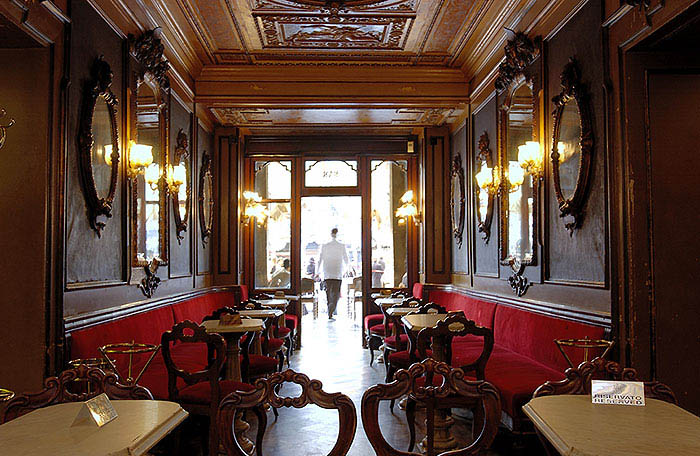
One of the eateries, Caffè Florian, has been serving meals since 1720. Upstairs is a museum showcasing Venetian history and art. People can enjoy a panoramic view of the square by climbing a clock tower built in 1499 that extends above a Renaissance building. There are a number of statues, monuments, and fountains on the square, as well.
Saint Mark’s Basilica
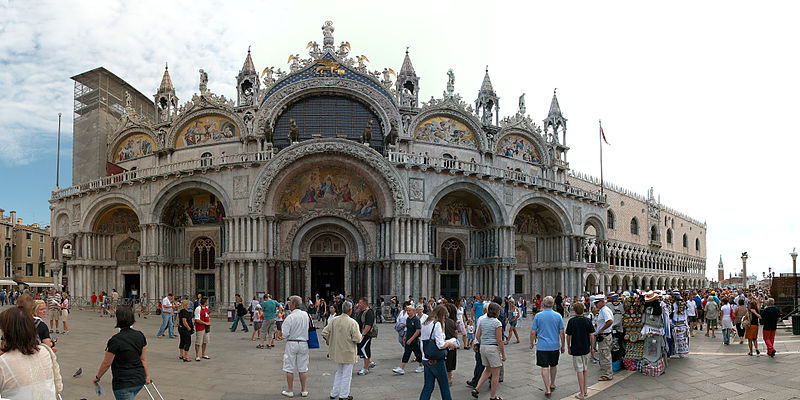
The piazza’s most impressive site is Saint Mark’s Basilica, one of the biggest and most opulent houses of worship on Earth. It is known as the “church of gold” due to its gold-leaf mosaics. A magnificent example of Byzantine and Italian Gothic architecture, the 17th century cathedral is topped with five domes and a number of spires. The lavishly adorned roof features marble sculptures and carvings. More statues, in front of the church’s ornate facade, include the postcard-worthy Horses of Saint Mark and The Tetrarchs. Additional statues – along with marble floors, decorated columns and pillars, and glorious ceiling mosaics – grace the interior.
Doge’s Palace – Top Things To See In Venice
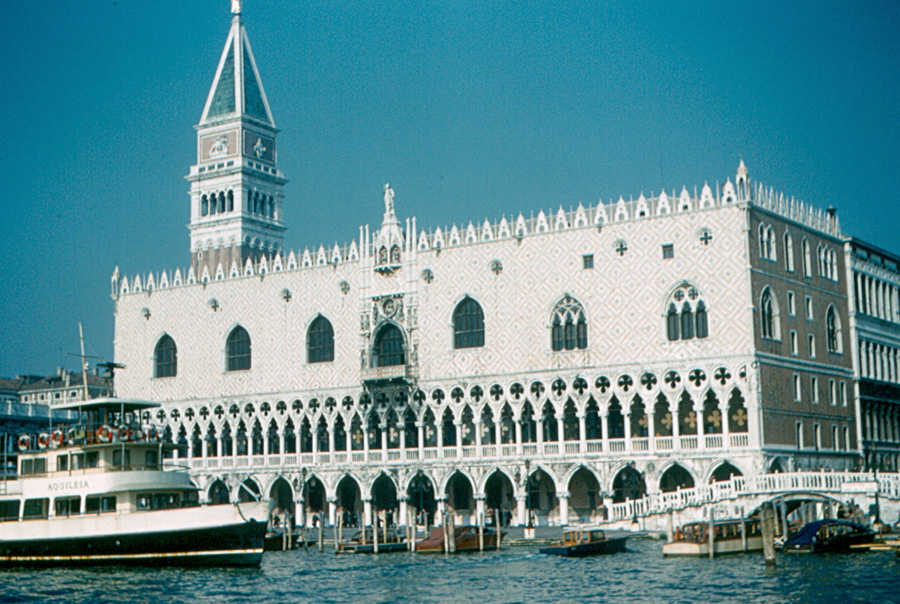
Nearby is Doge’s Palace, built in 1340 to house government officials, courtrooms, and a prison. The Venetian Gothic building is now a historic site with a large art museum. The exterior walls sport sculptures from the 14th century, and the roof is lined with decorated capitals. The Bridge of Sighs, erected in 1614, is a covered passageway that links the palace with the former prison. Criminals crossed the bridge following their sentencings to begin serving jail terms. The walk over the canal gave them their last glimpse of the outside world, which was the inspiration for the bridge’s name.
Teatro La Fenice (“The Phoenix”)
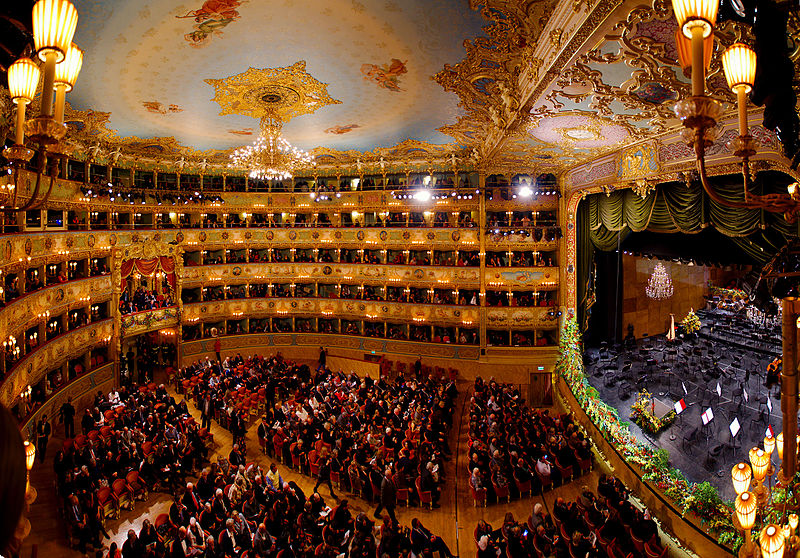
Among the magnificent theaters on the Grand Canal is the domed Teatro La Fenice (“The Phoenix”), one of the most famous opera houses in Europe. It is actually a recreation, as fires destroyed the initial 1792 structure and a later building. Designers of the current replica took great pains to make it look as much like the original theater as possible, including a soaring ceiling with opulent ornamentation and five tiers of theater boxes on each side.
Tourists marvel at how little Venice has changed since its founding in 827. The buildings, canals, and bridges appear much the same as way back then.
Grand Canal – Top Things To See In Venice

Likely the most prominent feature coursing through Venice, the Grand Canal is among the most prominent tourist attractions available in the city of Venice. A natural channel, it organically divides the ancient into two parts. This waterway serves as the primary conduit of Venetian transportation, as more modern mechanisms, like automobiles, are banned throughout the city. The Grand Canal is lined palaces, churches, hotels, and other public buildings, all contrived in Romanesque, Gothic and Renaissance styles of architecture. It remains the genesis of the Venetian civilization, acting as the thoroughfare that vitalized the trading empire that brought Venice to prominence in the late 13th century.
Academy Gallery

Also known as the Gallerie dell’Accademia, the Academy Galley is home to an expansive collection of European art. Founded in 1784 as a teaching facility for students of the Academy of Fine Arts, it has grown from its rudimentary beginnings into becoming one of the most renowned art museums in the world. Briefly home to Michelangelo’s statue of David, it also has expanded to include features like Michelangelo’s Prisoners, an exhibit dedicated to Byzantine art, as well as the Hall of the Colussus. It is now known most for its preservation of Renaissance art and as serving as a paragon for the rich cultural heritage of Italy.
Ponte dell’Academmia – Top Things To See In Venice

The last of the four bridges crossing the Grand Canal, the Ponte dell’Academmia nevertheless features unique architecture and beautiful views of Venice. Unlike most of Venice’s bridges, which are made of metal or stone, the Ponte dell’Academmia is crafted out of wood. Built in 1933, it was initially intended to only stand as a temporary bridge. However, the span and arch were appreciated by local Venetians, and the wooden bridge still stands. Though it still requires maintenance, it remains a mainstay for Venetians and tourists, while also offering convenient access to abundance of attractive neighborhoods.
Ca’ d’Oro

Ca d’Oro is a unique architectural wonder within the framework of Venice. Reflecting the region’s various influences, reflexive of its influence from the Austrians, the French, the Ottomans, and others; the structure was originally built in the 15th century in the Renaissance style, but coupled with Gothic and Islamic elements. Aside from its pleasing exterior elements, the interior of Ca d’Oro is also a treasure trove of wonders. Inside the Ca d’Oro is the Franchetti Gallery, which also serves as an excellent endeavor for patrons of the arts.
Historical Frequently Asked Questions (FAQ’s)
I. How does Venice stay afloat?
Venice’s origins date back to the 5th and 6th centuries, when people fleeing barbarian invasions sought refuge in the swampy, isolated islands of the Venetian Lagoon. The initial settlements were unstable, with buildings sinking into the mud. This forced the early Venetians to develop a new, more effective construction method to create permanent settlements.
The city isn’t necessarily “floating” but rather is built on a “forest” of submerged wooden piles driven deep into the soft, waterlogged mud of the lagoon. This method, a response to the need for a stable foundation on marshy ground, allowed the city to flourish. The wood, which would normally rot, has been preserved for centuries by the anaerobic (oxygen-free) conditions of the water and the hardening effect of mineral-rich silt, which essentially petrifies the wood over time, turning it into a stone-like substance. On top of these piles, builders placed layers of stone, brick, and Istrian stone to create a solid, water-resistant platform for the buildings. This unique and durable foundation system is the secret to how the city has defied its environment for over a thousand years.
II. Why were the Venetian canals created?
The Venetian canals were created out of necessity and evolved into a unique and vital system. Over time, these waterways became the lifeblood of Venice, serving multiple essential functions. They were the primary means of transportation for people and goods, facilitating Venice’s rise as a major maritime power and trading hub. The canals also served a crucial sanitary purpose, as the daily tides would flush waste from the city into the Adriatic Sea, a form of medieval sanitation. The very existence of Venice, with its grand palaces and intricate bridges, is directly tied to the creation and maintenance of its canals, which turned a challenging environment into a thriving and resilient city.
III. What’s the best way to get around Venice?
The best way to get around Venice is a combination of walking and using the city’s unique public transportation system. Since the historic city is completely car-free, all movement within the main islands is either on foot or by water. The most common and practical option is the vaporetto, or water bus. These public ferries operate on a series of routes throughout the canals and lagoon, functioning much like a city bus system, and are the most efficient way to cover long distances. For a more direct, but expensive, journey, private water taxis are available. Finally, while not a practical means of daily transport, a gondola ride is a classic Venetian experience, offering a scenic and leisurely way to explore the smaller, more picturesque canals.
IV. When is the best time to visit Venice?
The best time to visit Venice depends on your priorities. For pleasant weather and manageable crowds, the “shoulder seasons” of April-May and September-October are generally considered ideal. During these months, the weather is warm but not stifling, and the city is bustling but not overwhelmed. The quietest and most affordable time to visit is during the winter, from November to early March. While the weather is cool and there’s a risk of high water and fog, you’ll experience a more tranquil and authentic side of the city with fewer tourists. The summer months of June-August offer the best weather for outdoor activities, but they also bring peak crowds, higher prices, and intense heat and humidity.
V. What are the best food dishes in Venice?
Venetian cuisine is a unique reflection of the city’s history as a powerful maritime republic and its location on a lagoon. Unlike the heavy pasta dishes and tomato sauces found in central and southern Italy, Venetian food is dominated by fresh seafood, rice, and polenta, often incorporating flavors and spices from the East. The best way to experience it is through cichetti, Venice’s version of tapas. These small, bite-sized snacks are served at traditional bars called bàcari and are often enjoyed with a glass of local wine. Popular cichetti include Baccalà Mantecato (creamed cod), Sarde in Saor (sweet and sour sardines), and fried seafood like moeche (soft-shell crabs). Beyond cichetti, must-try dishes include Risotto al Nero di Seppia (risotto with squid ink) and Bigoli in Salsa (thick pasta with a sauce of onions and anchovies), which showcase the city’s reliance on and creativity with ingredients from the sea.

